|
| |
Archives
book recommendation
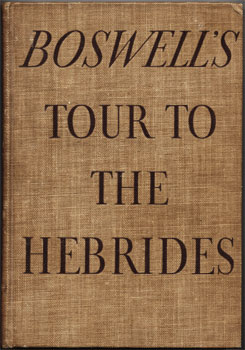
This was my father's book. Inside, in pencil, he wrote: R.D.G. Coale 11/9/36. He had turned 19 in August of that year. I don't know if he ever read the book and I can't ask him. He died 33 years ago. I just got around to reading it. I don't know of many 19 year olds that would have a book like this.
Boswell, Samuel Johnson's biographer, and Samuel Johnson did a tour of Scotland in 1773. This book is about the travels of two of the greatest minds of the time. The book is available online but it isn't this book. The original book that Boswell published, the one online, had been heavily edited. This book is based on Boswell's original notes which had been recently discovered after it had been thought they had been lost. Unfortunately, even the current published versions seem to be the original edited version. The internet comes to the rescue. Alibris lists several versions of my edition starting at $3.95. To make sure you get the right one. The full title is: Boswell's Journal of a Tour to the Hebrides With Samuel Johnson: Now First Published from the Original Manuscript. It was published by The Literary Guild in 1936.
Johnson and Boswell.
|
But, if Boswell without Johnson would have been forgotten, it was his own talent that gave the Life its surpassing excellence. Whenever he writes of Johnson, he succeeds in giving the impression that he saw things as they were, and not through the spectacles of his own personality. He never tried to conceal the part that he played; and yet, despite his vanities, and they were many, he knew how to make his readers think that they are looking at the facts for themselves. The very freedom from self-consciousness which was no help to his career was a great part of the secret of his skill in description. It also provided him with material denied to less sympathetic natures. “No man,” he said, “has been more successful in making acquaintance easily than I have been. I even bring people quickly on to a degree of cordiality.” Johnson, too, tells us that “Mr. Boswell’s frankness and gaiety made every body communicative.” He never tired of arranging new situations, in order to see what they would bring forth; and his interpretations of what he found are strong testimony to his insight into character and to his judgment. Minute as his observations are, he never offers a meaningless detail. It is easy to understand why Johnson made him postpone the Journal of a Tour to the Hebrides, which was intended as a supplement to his own Journey. He had given “notions rather than facts”; but Boswell had contrived to make the facts give Johnson.
| |
[more]
James Boswell (1740-1795)
Here are two online versions:
Journal of a Tour to the Hebrides with Samuel Johnson, LL.D.
The Journal of a Tour to the Hebrides with Samuel Johnson, LL.D. by Boswell
iraq
What a "Secure" Province Looks Like
by Billmon
|
But Tom Lasseter, the Knight-Ridder reporter who's made something of a gig for himself pointing out the gap between fantasy at the top and reality on the ground -- basically by letting the guys actually fighting the war tell their own stories -- has done it again. He recently filed this report from the province of Diyala, which lies to the east of Baghdad, well outside the Sunni Triange:
Commanders for the 3rd Infantry Division in Diyala said the number of attacks there had dropped from about a dozen a day last year to seven. Roadside bombs, they said, have decreased by a third. The latter trend, though, hasn't held up this month. In September 2004 there were 72 roadside bombs detonated or found, but 106 this month.
"They say attacks are down. Well, no [shit]," [Staff Sgt. Donnie] Hendricks said. "We're not patrolling where the bad guys are."
U.S. patrols on a parallel road, Route Marie, ended in late May.
Pointing to Route Marie on a map on the wall of his barracks, Hendricks traced a 2-mile stretch of the road with his index finger.
"They kicked our [ass] off this road," Hendricks said. "They hit us with so many IEDs we had to stop using it."
Needless to say, a province in which stretches of main highway have been turned into no go zones for U.S. military convoys can hardly be called pacified. And the routes that are open aren't much better:
| |
[more]
Experiencing Withdrawal Symptoms in Iraq
|
Recently, our top commander in Iraq, Gen. George W. Casey Jr., was brought back to the United States, officially to consult with George Bush on what the President still calls "our strategy for victory." Along with retiring Joint Chiefs Chairman Gen. Richard Myers, Centcom Commander Gen. John Abizaid, and Secretary of Defense Donald Rumsfeld, Casey then testified before Congress on military "progress" in Iraq. As Rumsfeld confidently told the Armed Services Committee, ``Every single week that goes by, the number of [Iraqi] security forces goes up, the total.'' In a statement from the White House Rose Garden after meeting with his generals, the President made the same point: "The growing size and increasing capability of the Iraqi security forces are helping our coalition address a challenge we have faced since the beginning of the war. And General Casey discussed this with us in the Oval Office… Now, the increasing number of more capable Iraqi troops has allowed us to better hold on to the cities we have taken from the terrorists… We're on the offense. We have a plan to win."
Before Congress, however, Casey painted a rather different picture of the Iraqi national-army-that-isn't. In fact, on a crucial point, his testimony bore little relation to the assessments that either George Bush or Donald Rumsfeld claimed they had heard. Last June, the Pentagon informed Congress that three Iraqi battalions were finally at "Level 1" of preparedness -- that is, "fully trained, equipped, and capable of operating independently" of U.S. forces. On Thursday, Casey lowered this estimate to one battalion (evidently not even one of the previous three), calling it a "step backward." In other words, of the 100-plus battalions in the American-created Iraqi army, only one -- perhaps 1,000 soldiers -- is capable of heading off on its own to fight, out of sight of its American protectors. Donald Rumsfeld has often talked about the "metrics" of success. Well, here's perhaps the most significant metric we have on the Iraqi military -- the essence of what passes for a Bush administration plan for the pacification of Iraq -- and it speaks the world.
| |
[more]
The Greatest Strategic Disaster in US History
|
Capitol Hill Blue, the Washington, D.C., publication that cultivates relationships with White House staffers, reports one White House aide saying, "It's like working in an insane asylum. People walk around like they're in a trance. We're the dance band on the Titanic, playing out our last songs to people who know the ship is sinking and none of us are going to make it."
| |
[more]
photography
Shadi Ghadirian
|
I am a woman and I live in Iran. I am a photographer and this is the only thing I know how to do. I began work after completing my studies. Quite by accident, the subjects of my first two series were "women". However, since then, every time I think about a new series, in a way it is related to women.
| |
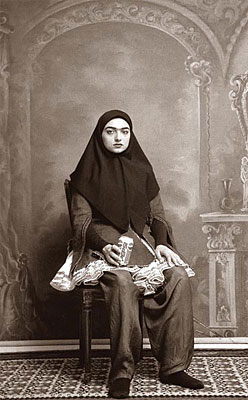
[more]
thanks to wood s lot
torture r us
Atoning for Abu Ghraib
The lives of two men -- an Iraqi prisoner and an American guard involved in his torture -- were destroyed in the prison. Nine U.S. soldiers have been sentenced in the scandal, but both men say that's not nearly enough.
|
On the day he lost his innocence before the eyes of the world, Sgt. Javal Davis was sitting in the mess hall at Victory Base in Abu Ghraib prison, eating a plate of rice and tuna fish. Davis ate mechanically, ignoring what the other soldiers were saying, occasionally glancing up at a TV screen.
It was April 28, 2004. Insurgents were still launching the occasional rocket-propelled grenade at their base near Baghdad, and CNN was broadcasting images from home: basketball, the White House, Wall Street. It was a normal day at Victory Base. But then the room suddenly went still.
There was a man on the screen, his arms spread out and attached to electrical wires, his head covered with a sandbag. The headline read: "Scandal at Abu Ghraib." Other images followed, images of prisoners on dog leashes, of piles of naked, intertwining bodies.
| |
[more]
photography
An Air of Abstraction
|
Here we present a set of Battlefield Photographs ordered and used by the French Army during WWI. The photos are vintage aerial photographs of the French battlefield in the Verdun region form 1916 until 1917. The photographers are unknown.
| |
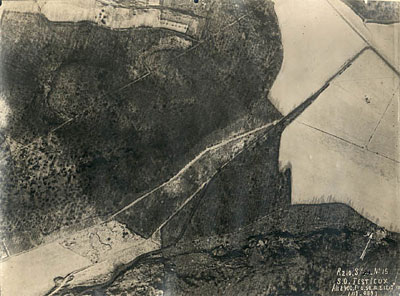
[more]
thanks to consumptive.org

The 51st State
by Billmon
|
The New Pravda has fingered one of the two unnamed U.S. government officials implicated in the AIPAC spy scandal -- while bending over backwards to make it clear the whole thing is really just a great big fuss about nothing. I mean, we're talking about Israel, for Christ's sake, not some foreign country.
| |
[more]
AIPAC and Espionage:
Guilty as Hell
Pentagon analyst plea bargains, threatens to expose Israel's Washington cabal
|
The plea bargain struck by former Pentagon analyst Lawrence A. Franklin – charged with five counts of handing over classified information to officials of a pro-Israel lobbying group, who passed it on to Israeli diplomatic personnel – has delivered a body blow to the defense of the two remaining accused spies. Steve Rosen, who for 20 years was the chief lobbyist over at the American Israel Public Affairs Committee (AIPAC), and Keith Weissman, AIPAC's top foreign policy analyst, befriended Franklin and pumped him for top-secret information – including sensitive data about al-Qaeda, the Khobar Towers terrorist attack, Iran's weapons program, and attacks on U.S. soldiers in Iraq. Now they face the likely prospect of Franklin testifying to their treason in court.
| |
[more]
cycling
Conference Bike
|
The ConferenceBike is a tricycle pedaled by 7 riders sitting in a circle. One person steers, while everyone is free to pedal or not as the bike moves effortlessly along.
| |
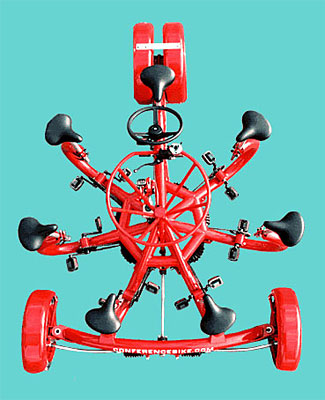
[more]
thanks to Blaine England
Don't miss the movie!
columbine
EXCERPT: The Scene of the Crime Was the Cause of the Crime
It wasn't Marilyn Manson or lax gun control laws that prompted Eric Harris and Dylan Klebold to open fire at Columbine High School. It was life at Columbine.
|
On April 20, 1999, the bloodiest of all school rage massacres took place at Columbine. Eric Harris and Dylan Klebold murdered twelve students and a teacher, wounded twenty others, and then killed themselves. Americans wanted to blame everything but Columbine High for the massacre -- they blamed a violent media, Marilyn Manson, Goth culture, the Internet, the Trench Coat Mafia, video games, lax gun control laws, and liberal values. And still skipping over the school, they peered into the opposite direction, blaming the moral and/or mental sickness, or alleged homosexuality, of these two boys, as if they were exceptional freaks in a school of otherwise happy kids.
They searched all over the world for a motive, except for one place: the scene of the crime.
In fact, a typical Columbine school day for Harris and Klebold was torture. Former student Devon Adams told the Governor's Columbine Review Commission that the boys were regularly called "faggots, weirdoes, and freaks."
| |
[more]
pencils
Here is a blog on pencils. Another antique writing device that still has some use today. And not all pencils are the same.
Pencil Revolution
|
Pencil Philosophy: Wooden Wisdom, Product Reviews & Ephemera, etc.
| |
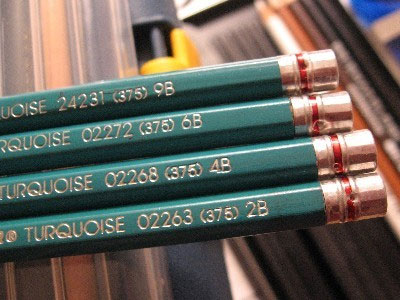
[more]
religion
Societies worse off 'when they have God on their side'
|
RELIGIOUS belief can cause damage to a society, contributing towards high murder rates, abortion, sexual promiscuity and suicide, according to research published today.
According to the study, belief in and worship of God are not only unnecessary for a healthy society but may actually contribute to social problems.
The study counters the view of believers that religion is necessary to provide the moral and ethical foundations of a healthy society.
It compares the social peformance of relatively secular countries, such as Britain, with the US, where the majority believes in a creator rather than the theory of evolution. Many conservative evangelicals in the US consider Darwinism to be a social evil, believing that it inspires atheism and amorality.
Many liberal Christians and believers of other faiths hold that religious belief is socially beneficial, believing that it helps to lower rates of violent crime, murder, suicide, sexual promiscuity and abortion. The benefits of religious belief to a society have been described as its “spiritual capital”. But the study claims that the devotion of many in the US may actually contribute to its ills.
| |
[more]
a trio of knob winders
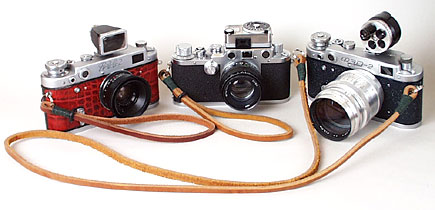
I've been off on some non-rangefinder tangets. I've been building a full-range photography kit out of bottom feeders. Lately it has been medium format and large format bottom feeders. A Salut-S, four large format process lenses for the 5x7/4x5 Burke & James, another Salut-S, a 3x4 Graflex SLR and the parts to complete my 4x5 Graflex SLR. And I'm working on a darkroom for film processing. Getting my Leica IIIc refurbished has gotten me back to little rangefinders and given me some direction for what I want to do with the little suckers. Things like portraits, landscapes, and architectural work I prefer to leave to medium and large format. I want the little rangefinders for street phototgraphy, snapshots, and available darkness. And they make great sketch books.
In the center is the Leica IIIc with a Jupiter 8 50/2. The FED 2s are small but I didn't realize how much smaller the Leica IIIc was until I put them together for a group portrait. It's been a joy to shoot. So quiet! On the left is a Jupiter 12 35/2.8 on my red FED 2. I've decided to dedicate the lens to that body. I need to adjust the close focus a bit more and do some lubing. It squeaks when I wind the film. Otherwise it works fine. Sweet. The Leica and the Fed both fit in my coat pockets. The Leica in the right pocket and the red FED in my left pocket. The blue FED still needs some work. It's Joe's old FED with a J9 85/2. It still skips frames. I will eventually send it off to Oleg. The J9 is a little stiff and needs the Oleg treatment, too. Something to look forward to. It doesn't fit in my coat pocket, hence the neck strap. Cool straps! :)
oil
Calgary
|
But this blog entry is not really about the tar sands, it's about the expectations of the people working off of them, which is that they assume the easy motoring utopia will continue indefinitely and are madly busy building a suburban infrastructure for it to dwell in, even while Canadians themselves are now paying the equivalent of $4 US a gallon for the privilege to commute forty miles a day.
What's going on in Calgary, with new subdivisions of half-million dollar houses opening every month, is the North American tragedy in microcosm. Because every new suburban house built, every new Target store opened, every new parking lot paved, every highway widened will be a project in the service of a living arrangement with no future. It is a true madness that beats a path to historic tragedy.
And this is what you have to think about, wherever you live in the US or Canada: what kind of projects and proposals are moving right now in the permitting pipeline of your own municipal planning boards? Things waiting to be built in the next year or two. Chances are they're the same suburban furnishings we've been getting for half a century, in the latest state-of-the-art releases. Each one is a tragedy. Each one will carry us further into darkness.
| |
[more]
speed winding
|
I've grown quite fond of knob winders. In fact, I've grown to prefer them to lever winders. Mechanically they are simpler. That is good. A well adjusted and lubed knob winder doesn't take much effort. I think the biggest hurdle to using knob winders is the perceived slowness of use. A wrong perception.
I developed a techinque for speed knob winding. I put the knob in the space between my thumb and finger. (See first picture.) Pressing the knob with the side of my finger I pull the finger back. It completes the wind before it reaches the end of the finger. (See second picture.) Reach over, press the shutter, and go back to step 1. I can get off 10 exposures in about 15 seconds. This might not work with short fingers. Try it. How many shots can you get off with lever winders?
| |
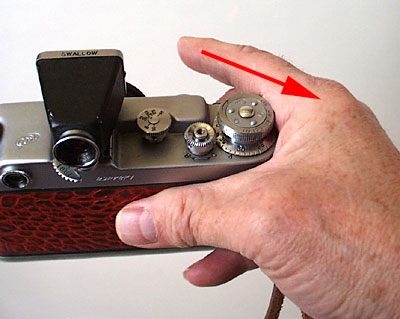
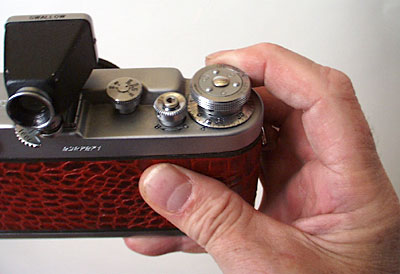
[more]
corporations
The Corporation: I
|
I recently finished reading “The Corporation: The Pathological Pursuit of Profit and Power”. It’s a short book, and in many respects a light one. Bakan makes the case that corporations match the profile of human psychopaths. By law a corporation can only consider profit, if its officers do anything else they can be sued – it is their fiduciary duty to act only to maximize shareholder value. If being “good” does that, so be it. If not, then that’s fine too – many corporations make the famous lawsuit calculation – will it cost us less to get sued or fined than it will to do the right thing?
If a corporation does something good for society, and tells you it’s altruistic, if they aren’t lying, they’re breaking the law. It’s not their business to do the right thing – it’s their business to make money and nothing else. If doing the right thing happens to make money, great – but if it doesn’t, doing it breaks their legal duty to their shareholders (note that good will is worth something. There's a reason it's listed as an asset.)
Bakan makes his case well, and he’s on firm ground doing so. The law supports him, and he’s got many luminaries who are happy to tell him he’s right.
| |
[more]
leitz or kmz?
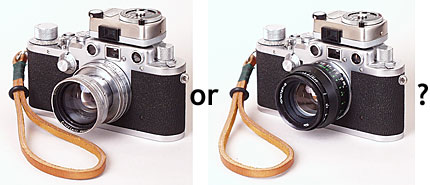
I had been planning on using the Leitz Summitar 50/2 that was on my Leica IIIc but it has a little haze. It's hard to see. If you hold the lens to the light just right you can see a hint of haze. I don't have the money to CLA it right now. Sherry Krauter said it would be upwards of $90. I thought I would compare it to my minty late model Jupiter 8 50/2 made by KMZ in the former Soviet Union. I was surprised.
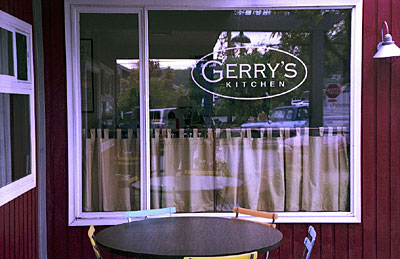
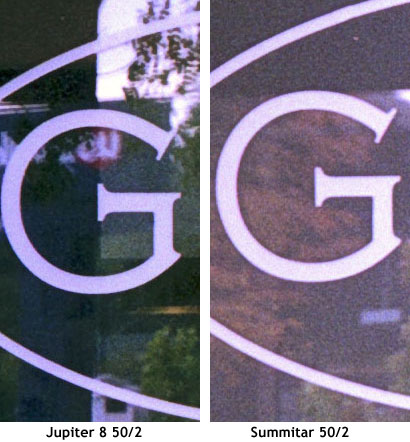
Two pictures taken with two lenses with the same exposure. The point of view was a little different but the distance was the same. I scanned both negatives with the same scanner setting. The details are at scanned resolution and are unsharpened with nothing done to them. The contrast is way down on the Summitar. Either its a lower contrast and a not as sharp lens or the haze is degrading the image more than I thought. Here is another example.
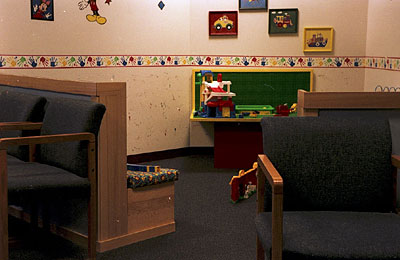
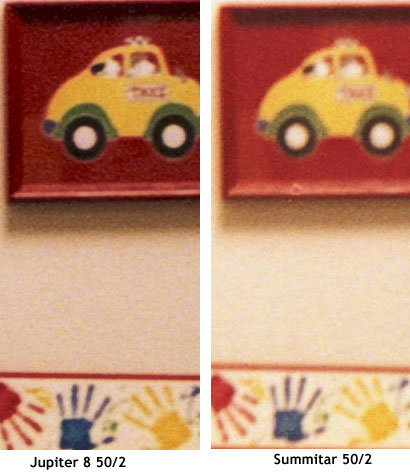
The second set shows the same thing. Same point of view and same exposure. The Summitar collapses to a more compact package but I can still put the Leica and J8 in my coat pocket. It looks like the J8 will be living on the Leica. Someday I will CLA the Summitar. That day may not be for a while.
|
|
|
|














